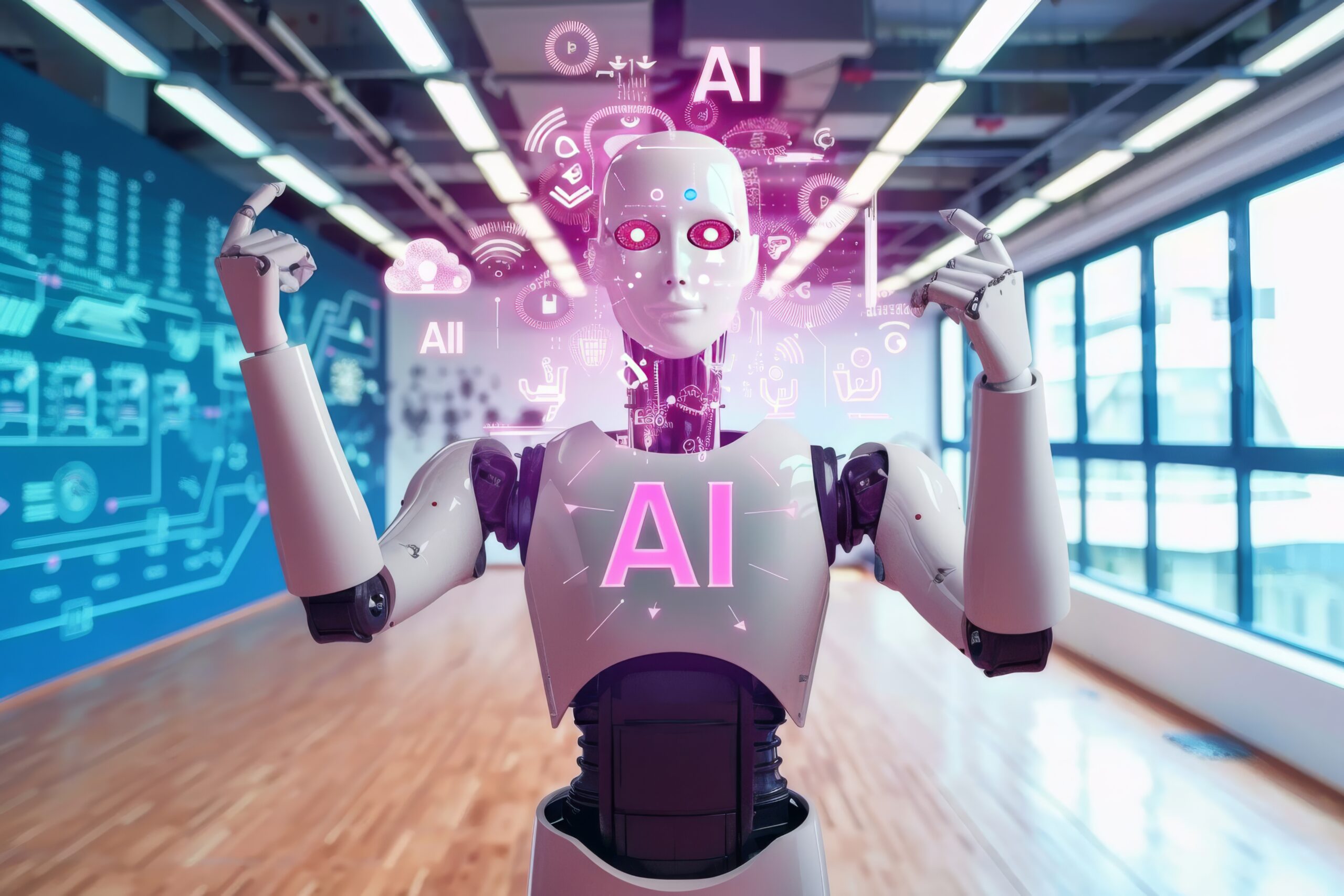As I delve into the world of artificial intelligence, I’m struck by the stark contrast between AI and AGI capabilities. This distinction is at the heart of understanding where we truly stand in the realm of machine intelligence.
AI vs AGI Capabilities and the Path to True Machine Intelligence
Have you ever wondered why AI seems simultaneously brilliant and bafflingly limited? The answer lies in the gap between AI and AGI capabilities, a chasm that researchers are working tirelessly to bridge.
In this exploration, I’ll guide you through the current landscape of AI, highlighting its strengths and shortcomings, and shedding light on the six key pathways that might lead us closer to artificial general intelligence.
We strongly recommend that you check out our guide on how to take advantage of AI in today’s passive income economy.
Table of Contents
The Current State of AI: Impressive Yet Limited
Pattern Recognition Challenges
Consider this scenario: Can you discern a pattern in a grid transformation? While humans can often spot such patterns with ease, even advanced language models like GPT-4 struggle with this task.
This limitation isn’t due to a lack of processing power, but rather a fundamental gap in AI vs AGI capabilities.
These models excel at tasks they’ve been trained on but falter when faced with novel abstract reasoning challenges.
The Hype vs Reality Debate
In the AI community, opinions are polarized. Some claim we’re on the brink of AGI, while others dismiss AI as mere hype.
The truth, as often is the case, lies somewhere in between. The gap in AI vs AGI capabilities is real, but so is the progress being made.
Hallucinations and Overpromises
One of the most glaring issues in current AI systems is their tendency to ‘hallucinate’ or generate false information.
This problem highlights a crucial difference in AI vs AGI capabilities: while AI can produce creative outputs, it lacks the fundamental understanding required for consistent accuracy.
The Challenges Facing AI Development
Delayed Releases and Overhyped Products
The AI industry often falls prey to overpromising and underdelivering. This trend underscores the significant gap between current AI vs AGI capabilities and public expectations.
Privacy Concerns and AI-Generated Content
As AI becomes more integrated into our daily lives, privacy concerns are mounting. The proliferation of AI-generated content also raises questions about authenticity and trust in digital spaces.
Academic Integrity and AI
The increasing use of AI in academic writing poses new challenges. This trend reflects the growing influence of AI capabilities in traditionally human domains.
The Positive Potential of AI
Assistive Technologies
Despite its limitations, AI has shown remarkable potential in assistive technologies. The gap in AI vs AGI capabilities doesn’t negate the real-world benefits AI can provide to those with disabilities.
Medical Advancements
In the medical field, AI is making significant strides. From faster stroke diagnosis to predicting chemical effects, these applications showcase the positive aspects of current AI capabilities.
Six Pathways to Bridging the AI vs AGI Capabilities Gap
1. Compositional Reasoning
Recent research suggests that by enhancing compositional skills, AI models might better mimic human-like generalization abilities, potentially narrowing the AI vs AGI capabilities gap.
2. Improved Program Location
By developing better methods to locate and utilize existing ‘programs’ within language models, we might enhance their problem-solving abilities, addressing a key aspect of the AI vs AGI capabilities divide.
3. Active Inference
This approach involves fine-tuning models on the fly, potentially allowing them to adapt more readily to novel tasks, a crucial step in bridging the AI vs AGI capabilities gap.
4. Combining Neural and Symbolic Systems
Integrating traditional symbolic systems with neural networks could lead to more robust reasoning capabilities, addressing a fundamental limitation in current AI vs AGI capabilities.
5. Joint Training on Specialized Knowledge
By training language models alongside specialized neural networks, we might embed crucial algorithmic knowledge, potentially narrowing the AI vs AGI capabilities gap.
6. Capturing Tacit Knowledge
Efforts to capture and integrate the implicit knowledge of human experts could significantly enhance AI capabilities, though this approach highlights the ongoing dependence on human expertise.
Conclusion
As we navigate the complex landscape of AI development, it’s clear that the gap between AI and AGI capabilities remains significant. However, the pathways to improvement are numerous and promising.
While we’re far from achieving true AGI, the progress being made in addressing the limitations of current AI systems is undeniable. The journey towards bridging the AI vs AGI capabilities gap is ongoing, filled with challenges and exciting possibilities.
As we continue to explore and innovate, one thing remains clear: the future of AI is as complex and nuanced as the human intelligence it seeks to emulate.
Frequently Asked Questions
Is AGI better than AI?
AGI (Artificial General Intelligence) isn’t necessarily “better” than AI, but it represents a more advanced and versatile form of artificial intelligence. While AI excels at specific tasks, AGI would theoretically match or surpass human-level intelligence across a wide range of cognitive abilities. The difference in AI vs AGI capabilities lies in their scope and adaptability.
What is the important difference between generative AI and AGI?
The key distinction between generative AI and AGI lies in their capabilities and scope:
- Generative AI: Specialized in creating content (text, images, etc.) based on patterns in training data.
- AGI: Hypothetical AI with human-like general intelligence, capable of understanding, learning, and applying knowledge across diverse domains.
The gap in AI vs AGI capabilities is evident here, as generative AI is a subset of narrow AI, while AGI represents a broader, more flexible form of intelligence.
Is ChatGPT AI or AGI?
ChatGPT is an AI, not an AGI. It’s a large language model trained to generate human-like text, but it lacks true understanding and general intelligence. The difference in AI vs AGI capabilities is clear in ChatGPT’s limitations:
- It can’t learn or update its knowledge base in real-time.
- It doesn’t have true comprehension of the information it processes.
- It’s limited to text-based tasks and can’t perform physical or visual tasks.
These limitations highlight the current gap between AI and AGI capabilities.
Does AGI exist yet?
No, AGI does not exist yet. While we’ve made significant strides in AI development, we’re still far from achieving true AGI. The gap between current AI vs AGI capabilities remains substantial:
- Adaptability: Current AI systems are specialized, while AGI would be flexible across various domains.
- Self-improvement: AGI would theoretically be capable of improving itself, a feat current AI can’t achieve.
- Consciousness: AGI might possess self-awareness, a quality absent in current AI systems.
Bridging this gap is a major focus of ongoing AI research and development.

We strongly recommend that you check out our guide on how to take advantage of AI in today’s passive income economy.




